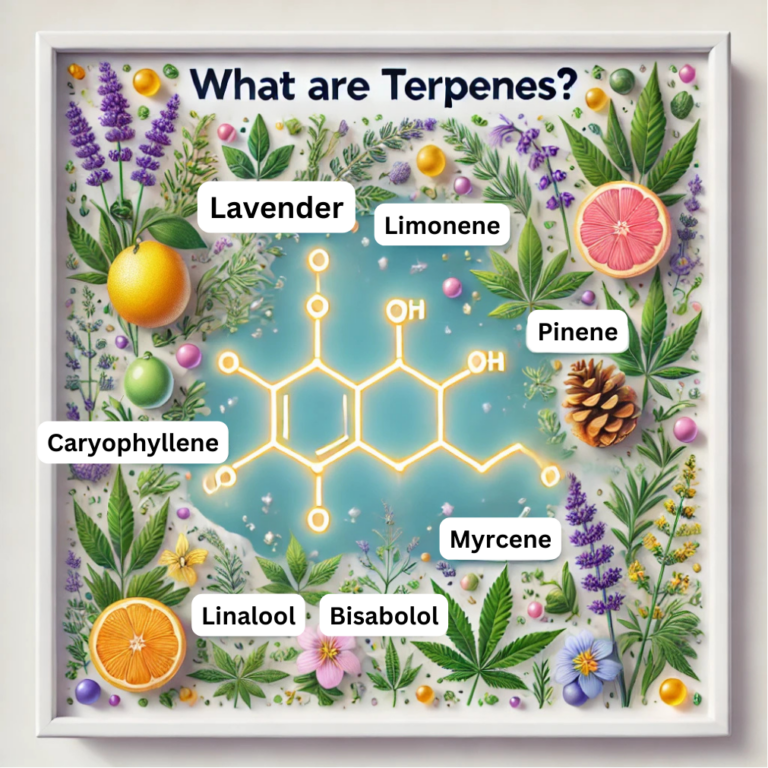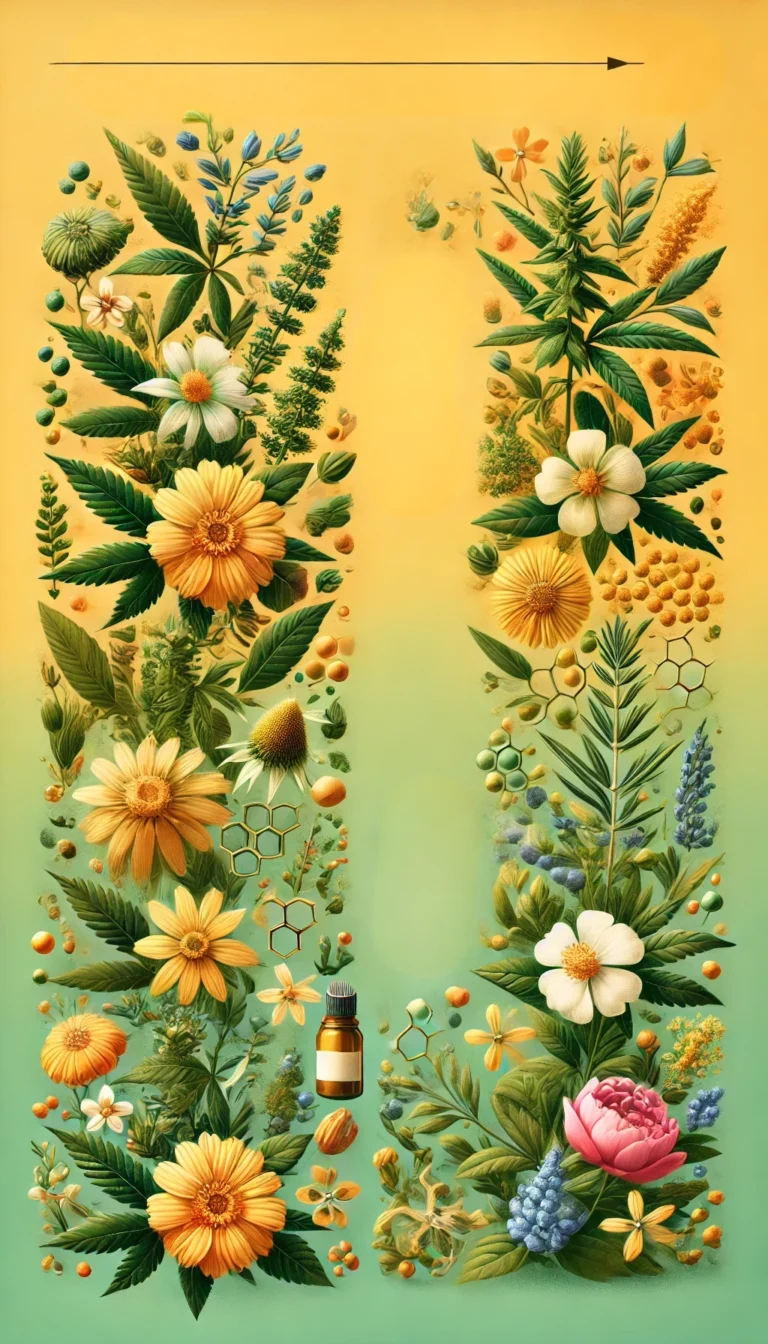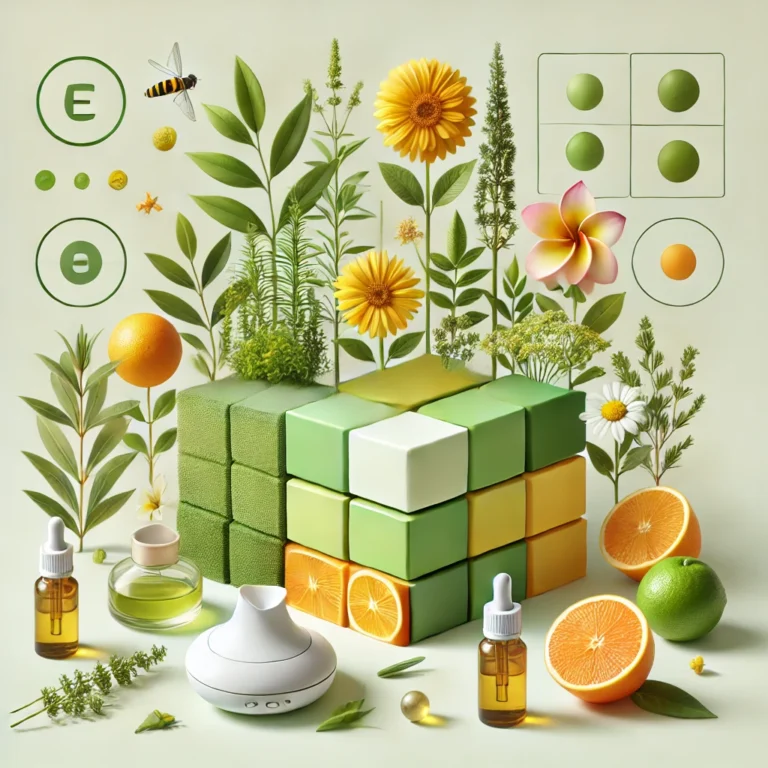When I first started learning about cannabis and its incredible chemical makeup, I found myself intrigued by the terms terpenes and terpenoids. At first glance, they sound almost identical, and many people (myself included) use them interchangeably. However, the more I dug into the science, the clearer the differences became—and trust me, understanding these compounds will open up a whole new appreciation for cannabis and aromatherapy. So let’s break it down and explore the fascinating world of terpenes vs. terpenoids, their unique benefits, and how they play a crucial role in our favorite plants and essential oils.

Terpenes are naturally occurring compounds found in plants (and even some insects) that give them their distinct aroma. These aromatic molecules are especially abundant in cannabis, but they’re also responsible for the smell of flowers, herbs, and fruits. For example, the refreshing scent of pine trees? That’s thanks to a terpene called pinene.
Terpenoids, on the other hand, are chemically modified terpenes. The key difference lies in the fact that terpenoids are formed when terpenes are exposed to oxygen or undergo drying and curing processes. In cannabis, terpenoids develop during the drying and aging of the plant, altering the chemical structure of the terpenes.

| Aspect | Terpenes | Terpenoids |
|---|---|---|
| Chemical Structure | Hydrocarbons (C and H atoms) | Modified with additional functional groups |
| Formation Process | Found naturally in living plants | Formed by oxidation or chemical modification |
| Aromatic Properties | Typically fresher and more intense | Often more complex and nuanced |
| Role in Cannabis | Contribute to the plant’s aroma and effects | Altered properties due to curing and processing |
| Common Examples | Pinene, Myrcene, Limonene | Thymol, Menthol, Carvone |
Understanding the difference between terpenes and terpenoids can enhance your appreciation for how plants, especially cannabis, interact with our bodies. For instance, terpenes like myrcene are associated with relaxation, while terpenoids like menthol provide a cooling sensation. Both terpenes and terpenoids contribute to what’s known as the entourage effect, where compounds work synergistically to amplify the effects of cannabis.

They’re Everywhere: Terpenes are the most common plant chemicals, with over 20,000 identified.
Stress-Relievers: Terpenes like linalool (found in lavender) are known to have calming effects.
Survival Mechanism: Plants produce terpenes to attract pollinators or repel predators.
Medicinal Properties: Terpenoids like artemisinin are used in malaria treatment.
Cultural Significance: Thymol, a terpenoid, has been used in traditional medicine for centuries.
Versatility: Terpenoids are used in perfumes, essential oils, and even as natural pesticides.
Numerous studies highlight the therapeutic potential of terpenes and terpenoids:

If you’re a fan of aromatherapy or cannabis, you’ve likely already experienced the benefits of these compounds. Here are some ways to make the most of them:
In Cannabis: Choose strains high in specific terpenes for targeted effects (e.g., myrcene for relaxation, limonene for energy).
In Aromatherapy: Use essential oils rich in terpenes like linalool or terpenoids like menthol for stress relief and focus.
In Skincare: Many terpenoids, such as thymol, have antioxidant properties that are great for your skin.
Now that you know the difference between terpenes and terpenoids, you’ll see these terms everywhere—from cannabis labels to essential oils. They’re more than just chemical names; they’re key players in how we experience the aromas, flavors, and effects of plants. So next time you light up your favorite strain or diffuse some essential oils, take a moment to appreciate the science at play. Who knew chemistry could smell so good?
Join our community of cannabis enthusiasts and terpene explorers! Get exclusive insights, in-depth guides, and the latest discoveries. No spam—just pure, aromatic knowledge delivered straight to your inbox.
Subscribe now and elevate your cannabis wisdom!